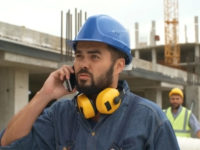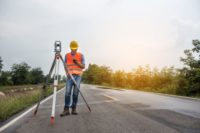3 ways mobile devices can improve the accuracy and efficiency of safety audits

Jobsite accidents are expensive for construction companies. The average injured worker spends 11 days off work, which means lost productivity and lower team morale. And that’s not to mention the costly workers compensation claims that often arise.
Job safety audits can mitigate the risk of accidents. But many rely on slow processes designed with compliance – not proactive safety management – as the core driver. As a result, workers often remain exposed to hazards on site.
With mobile devices, though, construction companies can conduct audits that let them close safety gaps before they cause an accident. Here, I’ll walk you through three ways mobile supports just that.
1. Mobile enables consistent data collection and analysis
Most safety professionals use a combination of paper and digital tools to conduct job safety audits. For instance, they might use a clipboard to document hazards on a job site, like a lack of PPE. At the end of the day, they bring their paperwork back to the office so it can be entered into Excel.
But maybe their notes were formatted differently than the last auditor’s. And data isn’t entered into Excel until the end of the week. In either case, this approach leaves room for inconsistencies in safety data. What’s more, it takes longer to address the PPE problem and respond to other safety hazards.
Mobile safety software simplifies and standardizes the auditing process. A good platform will offer…
- Standardized audit forms. These ensure consistency across all audits, which makes it easier to analyze safety trends.
- Real-time data entry. Safety professionals can fill out forms on their phone as they walk around a site. Thanks to cloud connectivity, the back office can instantly access safety data from their web portal. And even if the worker is offline, safety data will sync once a connection is restored.
- Instant data analysis. The software can flag safety concerns and trends before they snowball into major issues.
- Push notifications. Safety professionals can issue reminders to conduct safety walkthroughs at regular intervals to keep them from falling through the cracks.
The bottom line? Mobile makes it easier to collect and analyze the data companies need for each safety audit.
2. Mobile facilitates a proactive response to safety hazards
These days, practically everyone has a smartphone. With mobile safety software, that means anyone can report a hazard in real time — instead of waiting days for it to be flagged, logged, and addressed.
If there’s a PPE shortage, for instance, a worker can notify a safety professional of the problem as soon as they realize they’re running low. Then, the safety professional can rush-order more PPE and stop work on site until the issue is resolved.
Mobile can also help workers flag near misses: those “almost incidents” that largely go unreported. For example, if a worker almost trips on an extension cord, they can alert a safety professional so the cord can be relocated.
Thanks to mobile, the company can more proactively address safety concerns. That keeps workers safer on site. And it mitigates the company’s risk.
3. Mobile gets everyone invested in safety
When workers can easily log and report hazards, they feel more invested in maintaining a safe work environment. That’s crucial for every job site: participation is key to creating a culture of safety.
To foster that participation, though, it’s important to tailor mobile safety resources to workers’ specific needs. They probably don’t need access to the same forms, checklists, and dashboards as a senior safety professional. With the right software, companies can customize what each worker sees. That makes it simple for workers to find the right alert button or communication tool exactly when they need it.
The takeaway: mobile technology can be the conduit for a strong safety culture.
Use mobile to protect workers and your company
It’s easy for job safety audits to feel like a check-the-box exercise. But with mobile, companies can conduct them faster and smarter. What’s more, they can create the environment needed to support safety-first thinking at every level.
That’s huge for workers and the bottom line.
Looking for a reprint of this article?
From high-res PDFs to custom plaques, order your copy today!








